It remains perhaps the single most famous event from the largest war in human history. D-Day was the largest combined effort of naval, air, and land military power ever… and hopefully it will remain so forever. The Allies alone sent 11,590 planes, 6,939 ships, and over 150,000 troops into battle on the Normandy beaches on June 6, 1944.
With so many people involved and such high stakes, inevitably things were going to go wrong in interesting ways or have fascinating aspects you wouldn’t expect. Some are wryly amusing, some are tragic. All are worth learning more about.
10: Saved by Bad Weather
Moving thousands of open air troop transports across the English Channel was sure to leave the campaign as vulnerable to weather as it was to the Wehrmacht. Even before an Allied soldier set foot on the beach, bad weather caused the invasion to be delayed from the original launch date on June 5. On the next day, it was still bad enough that many huge waves caused numerous soldiers to drown on the approach, particularly at Omaha Beach.
Nevertheless, the weather prevented the German military from seeing the attack coming much earlier in the critical early hours. Naval patrols on June 6 were cancelled, a drill was cancelled which would have left the army in a better state of readiness for the initial Allied attacks, and many commanding officers were away when immediate counterattacks needed to be organized. This was a pretty understandable blunder given that they’d been given inaccurate weather reports which didn’t report the break in the rainy, stormy weather that was needed to gain a foothold.
9: Training for the Battle Cost Hundreds of Lives
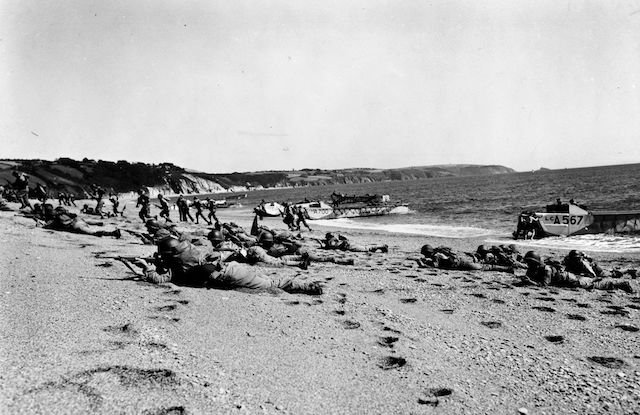
It’s not unheard of for people to die during training runs, but in the case of training for D-Day it reached staggering heights. On April 28, 1944, American soldiers were loaded into the same vehicles they’d use to land on Normandy during a trial run called Exercise Tiger at Slapton Sands, a beach in Southern England which was similar to the terrain they were planned to liberate in June. It was so important that live ammunition was going to be used and everyone was weighed down with full equipment.
Unfortunately for the personnel involved, the live ammo did not help them when two German torpedo boats found the convoy and sank two boats loaded with fully equipped troops at two in the morning. Between the dark and the equipment, 749 servicemen died in the attack – more people than would die during the attack on Utah Beach. The cost was extremely high, but at least as a result of the German attack troop transport, protocol and equipment were overhauled, potentially saving thousands of lives on June 6.
8: Amphibious Sherman Failure
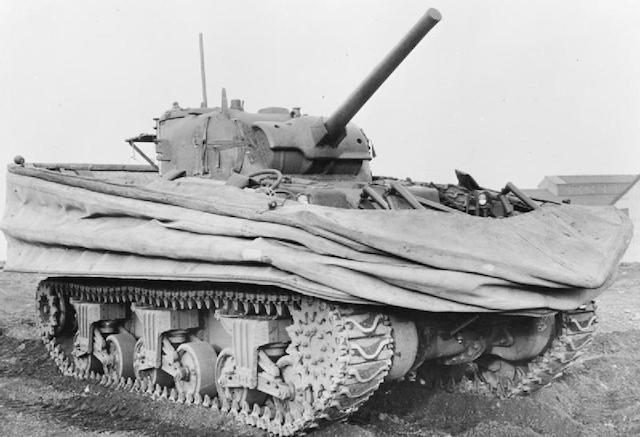
The plan for the Americans during the landing was for the infantry to be accompanied by dozens of amphibious Sherman tanks. Anyone who has seen the grueling scenes on Omaha Beach in Saving Private Ryan, where machine gun fire tears through the ranks of soldiers, might wonder where they were when the infantry desperately needed them. The answer was that the vehicles sank almost immediately upon leaving their transports, taking their crews to grisly, compact graves.
They were hardly alone among the new amphibious assault craft that failed dismally that day. Less than one in 24 vehicles even reached the beaches, and of those most were destroyed shortly after by the Axis military. So, surprisingly, an American soldier weighed down with heavy equipment and no defense but a helmet was actually much safer than someone assigned to an armored unit during that particular attack.
7: General Roosevelt Leads the Charge
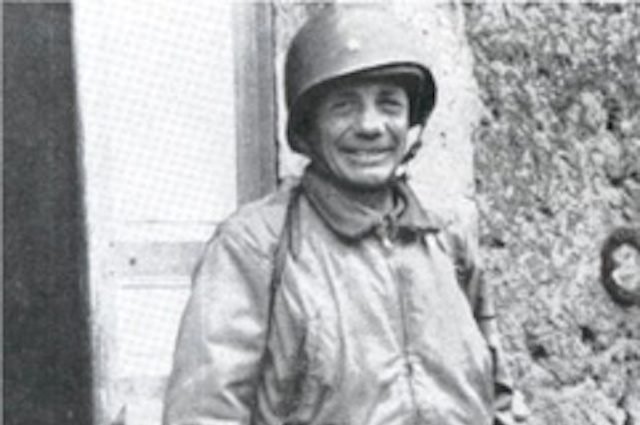
One of the most stirring events in American military history was Theodore Roosevelt leading the Rough Riders regiment with the black 10th Cavalry regiment, charging up Kettle and San Juan Hill during the Spanish-American War. Much less famous, but at least as compelling, were the actions taken by his son Theodore Roosevelt Jr. on Utah Beach. At 57 years of age, he was by far the oldest American soldier to see combat during D-Day. Due to a wound during World War One, he also had to walk with a cane. He also was the only American general on the beaches that day, it being an era where the vast majority of generals weren’t expected to put themselves anywhere near the line of fire so they could better observe and supervise military actions.
As was the case for many American soldiers during the battle, things immediately went wrong for the general. His unit was dropped a mile off course for their Utah Beach target. He had to wade even farther into the water to get his bearings, then lead an attack, limping towards the German positions in swampy terrain. He survived the battle and took the first American beachhead on D-Day, but died 36 days later. Of all things, it was a heart attack that cost him his life.
6: The Church Hospital in Free-Fire Zone
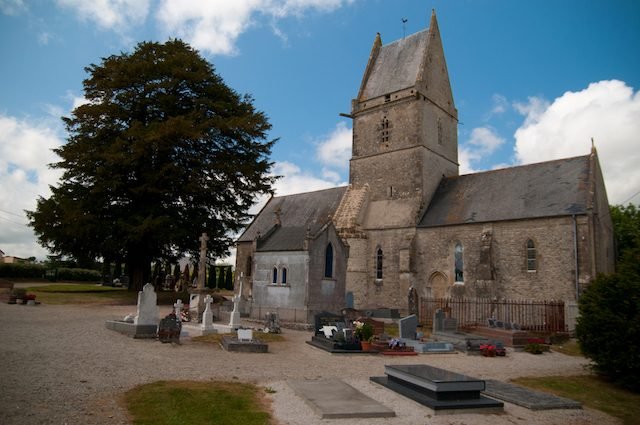
Vitally important but often relegated to the sidelines in depictions of war, medics performed extremely well for the Allied forces during the Normandy campaign. Two who still managed to stand out were unarmed paratrooper medics named Robert Wright and Ken Moore. Upon landing, they were immediately under fire, and yet they commandeered a church near Angoville-au-Plain (near Utah Beach), hung up a Red Cross flag, and set up a field hospital without a safe zone. While mortar fire and machine gun fire flew around them, they attended to dozens of soldiers while using pews as improvised beds.
Word of the Red Cross church seemed to quickly spread through both sides. Wounded German soldiers were brought or went to the church on their own. They were treated on the condition that their rifles were left outside. In all, 80 troops were treated, including one dozen Germans. It was wise for Wright and Moore to do so, because at one point the Germans overran the church. Entering with machine guns drawn, the enemy soldiers being treated included some of their comrades, prompting them to leave the medics alone to do their work when the Allied troops retook the church grounds. To this day, there are still blood stains providing a memento of their humane actions on D-Day in the church pews.
5: The Amazingly Diverse Wehrmacht Ranks
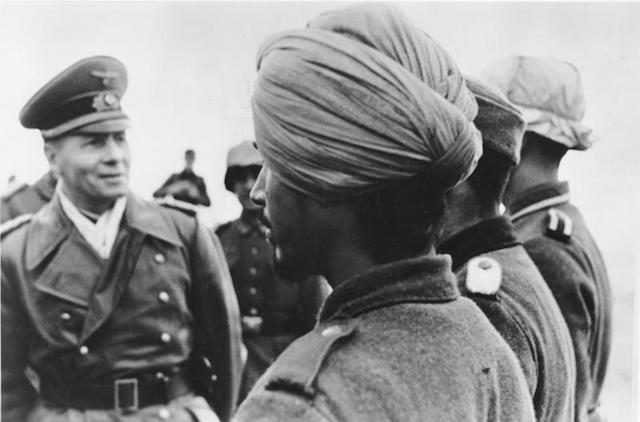
Considering their notorious adherence to White Supremacy, you wouldn’t think that the Third Reich would accept or be able to recruit what they would consider non-white soldiers into their armed services. However, by 1944 the Axis was desperate enough that a sixth of the soldiers that fought for them on D-Day weren’t from countries in the Axis, in segregated units called the Ost-Battaillone (“Eastern Battalions”). Not only was there an array of anti-Soviet volunteers from former Soviet satellites such as Estonia, Poland, Ukraine, and so on, but there was also an array of soldiers from Korea, Indonesia, China, Mongolia, and Thailand that served on D-Day. The irony did not escape the German high command, with one general being quoted asking why Russians would fight for Germany in France against Americans.
There was also a collection of hundreds of Indian soldiers called the Tiger Battalion that tried to drive the Allies back. Most of the Indians were former Allied conscripts that had been offered their freedom in exchange for service. There were also volunteers that hoped to overthrow the British empire.
4: The Rout of the German Navy
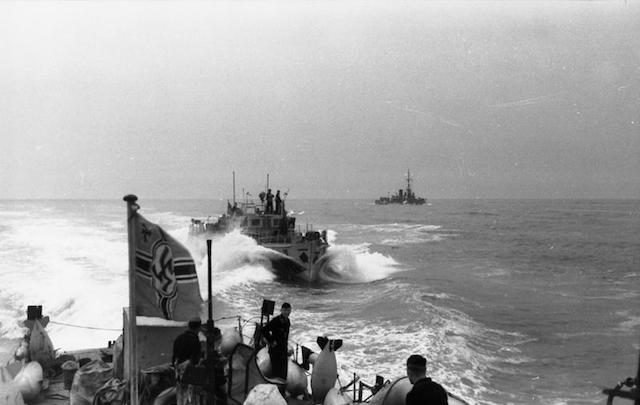
With thousands of ships, from battleships to merchant ships, arrayed in a body of water that was in places only about 21 miles wide, D-Day might seem like a good time for the Reich to send every available U-Boat into the English Channel. The German navy was able to send 16 of them into battle on D-Day.
In a signal of how the era of conventional sea warfare was over, it wasn’t even the Royal or US Navy that beat them, but the Royal Air Force. Within hours, they took out one U-Boot, damaged five others, and sent the rest into retreat. They also found a group of German destroyers and damaged them so badly that they had to return to port. In exchange, the German navy was only able to sink two boats, one being a Norwegian destroyer that dated back to 1909 called the Svenner. Perhaps nothing shows just how bungled the day was for the German navy quite like the fact that the U-Boats hit the practically obsolete Svenner effectively on accident, having been aiming for a ship called Warspite.
3: Luftwaffe’s Two Fighter Attack
As mentioned, the Allied air force committed to the D-Day invasion numbered roughly 11,590. Arrayed against this, the Luftwaffe could pit 183 planes that were within range of the invasion force. With odds like that, the fact there were any German pilots who could accomplish any missions was something of a grim miracle. The two German pilots who managed to get their fighters up were ace Josef Priller (who supposedly shot down 101 planes) and his wingman Heinz Wodarczyk. Owing to the unexpected nature of the attack, both of the pilots flew nursing grievous hangovers. Nevertheless, they flew their Fw 190A-8s to Sword Beach and attacked the British troops. It’s unknown how many of the 630 casualties the British suffered were inflicted by them, but Priller seemed to consider one strafe run enough before he and Wodarczyk returned to base. Most of the rest of the Luftwaffe actions on D-Day were unsuccessful bombing attempts at night that cost them 47 planes.
The act became famous far out of proportion to its military significance because it was recreated for the epic war film The Longest Day (you can watch a clip above). Wodarczyk was killed in action on January 1, 1945, but Priller survived the war. Perhaps it’s fitting, considering his hungover status during his most famous act, that after the war he made his living managing a brewery.
2: Hell for French Civilians
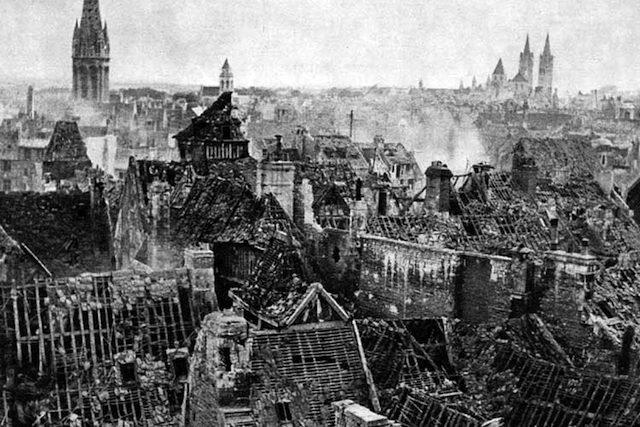
The portrayal of the Allies during D-Day has been so heroic that for decades it was practically above criticism. However, the need to defeat a large and well-fortified opponent had required massive bombardments on the part of the Allies, and many non-combatants caught in the crossfire paid the ultimate price. By some estimates, 2,500 French people were killed by the Allies on D-Day. Others put it as high as three thousand. Either way, it’s roughly the same number as the number of Allied soldiers killed in action that day.
One area that was particularly devastated was the town of Caen. An attempt to blow up bridges on the Orne River resulted in bombs being dropped in its center, killing roughly 600 people. And that was only the beginning: when the Allies failed to take Caen by the end of June 6, it was decided to deny it to the Germans by completely flattening the town, bringing the death toll up to two 2,000 (the photo above is the aftermath in Caen). Little wonder that during the days after D-Day, the primary feeling the French in the area expressed was fury.
1: Hitler’s Underreaction
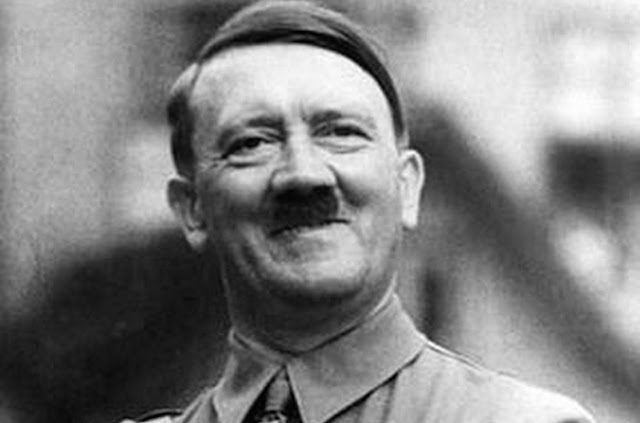
Since Adolf Hitler is mostly imagined as a raving madman, it’s natural to assume he’d react with fury to learning hundreds of thousands of Allied troops had opened up a new front on land. Rather than being at all worried that the landing of Allied troops in Normandy signaled any kind of noose tightening around his neck, Hitler was reportedly quite pleased with the events on the day after he belatedly got up at noon, having stayed up til 3:00 a.m. socializing the night before. “The news could not be better,” he supposedly said, expecting the Allied soldiers to be “smashed on the beaches.”
He believed that since the Allies had landed when the weather was bad, their attack would be too hampered to work. Also, landing in France meant that Allied troops had left the relative safety of Great Britain to where German soldiers could finally reach them, and where the Luftwaffe had a better shot at them. Considering the disastrous Allied raid at Dieppe two years earlier, this was a bit more reasonable than it might sound now. This lack of response and urgency slowed the German response considerably, hence such eventualities as there only being two Luftwaffe fighters that attacked the landing forces.
Hi! I am a robot. I just upvoted you! I found similar content that readers might be interested in:
http://www.toptenz.net/10-fascinating-facts-d-day.php
Downvoting a post can decrease pending rewards and make it less visible. Common reasons:
Submit